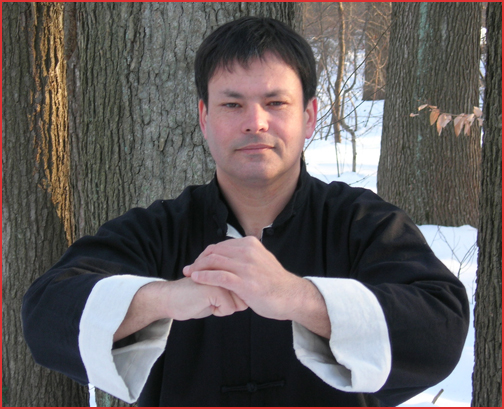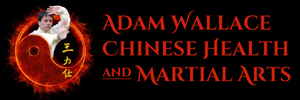 Anyone involved in the world of Chinese martial arts, or perhaps an avid fan of the Hong Kong martial arts cinema, will likely have witnessed or even performed martial salutations (special greeting gesture called ‘Bao Quan Li’, or ‘Fist Wrapping Ritual’) quite often without understanding the full meaning of it, or the history behind it.
Anyone involved in the world of Chinese martial arts, or perhaps an avid fan of the Hong Kong martial arts cinema, will likely have witnessed or even performed martial salutations (special greeting gesture called ‘Bao Quan Li’, or ‘Fist Wrapping Ritual’) quite often without understanding the full meaning of it, or the history behind it.
In ancient times, it was customary for Chinese martial artists to greet each other with a sign of mutual respect for the other’s style, skill, and/ or status (like the military salute today). Back in ancient times martial artists had to exercise extreme caution, and would have been on constant alert for surprise attacks, so they avoided direct physical contact with anyone not well known to them, since they could be encountering an unknown enemy, such as a bandit, one from an opposing faction or rival school, or simply a challenger looking to make a name for himself in defeating a renowned master. Handshakes would have been potentially dangerous, as one hand would be occupied if an attack swiftly followed, and also many Qin Na (joint-locking skills) can be applied from grasping the hand. Therefore, any martial artist voluntarily giving up his hand to someone whose real intentions were unknown to him would have been either very naive, or approaching senility, exercising such recklessness and poor judgement. This would have been similar to a gunslinger from the American Old Wild West sitting with his back to the saloon door. (Actually, the legendary “Wild Bill” Hickok violated his own cardinal rule regarding this, and paid the price with his life!) Thus, this symbolic martial greeting evolved out of necessity, as a means of recognition and respect without the need for actual physical contact.
Every martial art features various characteristic hand shapes, that each have their own combat effectiveness (fist, knife-hand, ridge-hand, spear-hand, palm-heel etc.). But, it is the fist that makes the hand into its densest and hardest striking surface, like a club, and also provides the greatest protection for the fingers. So, the fist symbolizes preparation to fight, and ‘martial art’. The act of covering the fist is like like holstering a loaded gun or sheathing a knife, demonstrating no threat, and peaceful intentions. This also demonstrates ‘discipline’ and ‘restraint’ from abusing the power and strength developed from the martial art practice. So, martial art is to be used for good, and not oppressing the weak.
The martial salutation requires that the right-handed fist be covered, or concealed by the left palm. Some, you may see, prefer to hold the left hand rigid – palm flat (against right knuckles) with fingers extended – others cover the fist (like ‘Paper’ covers Rock in Rock-Paper-Scissors). The two hands (fist in palm) are joined together in front of the chest, with the arms and and elbows relaxed, to form a loose circle. The elbows are held out but never raised. The distance between hands and chest can vary too. Some may hold the hands at around eight inches, while others may outstretch the arms to almost fully extended. Some turn the palm of the closed hand outwards. Some shake the two hands held together back and forth. Others may combine the still gesture with a slight bow of the head. When performing or demonstrating our skills in public, it is proper etiquette to make this salutation to an audience, and especially to seniors, masters and grandmasters. Those competing in tournaments should face and greet the judges before and after their performance, and their opponent before and after the bout. This shows respect and humility and education in the culture.
There is a symbolic meaning behind this gesture too. The four fingers represent the four corners of the Earth/ four directions, and four oceans and the thumb represents ‘Number One’. In China, when a person points to himself, he uses the thumb (like a ‘Thumbs Up’ pointing backwards). This thumb gesture combined with non-verbal communication, like jutting the chin, making a stiff upper lip or sneer, and widening/ bulging the eyes, means one considers himself the best, or ‘Number One”. Some examples of this – Bruce Lee in his movies, and the cantankerous Landlady in ‘Kungfu Hustle’. However, traditional Chinese Wu De (Martial Ethics) taught and demanded humility and respect, even from a champion standing over his defeated opponent. For example, famous skilled masters Ip Man (Wing Chun) and Chen Fake (Taijiquan), were respected and well-loved for their humility and dignity. So, by closing our four fingers and then the thumb, making the fist shape, we are, in effect, affirming that within the four corners of the world, there is No Number One, we are all brothers/ sisters, and we offer offer peace and good intentions, from our heart, to our friends.
The fist is hard (yang) and the open hand covering it is soft (Yin), so his gesture is another physical representation of the the Daoist Taiji symbol – yin and yang together – hard/ strong on the inside and soft/ gentle on the outside, like steel wrapped in cotton, or iron wrapped in silk. Like so many aspects within Chinese culture, nothing can be taken at face value, as there are always many meanings and multiple layers. This seemingly simple gesture is rich with symbolism, meaning, history and Chinese culture.
– Adam Wallace
